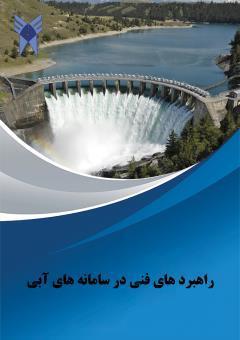تحلیل کارکرد شبکههای تاثیرگذاری و تبادل اطلاعات در نظام حکمرانی آب؛ مطالعه موردی حوضه زایندهرود در استان اصفهان
محورهای موضوعی : مدیریت منابع آب
اسماعیل ذاکری مهابادی
1
![]() ,
محمدرضا یزدانی زازرانی
2
*
,
محمدرضا یزدانی زازرانی
2
*
![]() ,
حنانه محمدی کنگرانی
3
,
حنانه محمدی کنگرانی
3
![]()
1 - دانش آموخته رشته سیاستگذاری عمومی، مرکز تحقیقات مطالعات آب، واحد اصفهان (خوراسگان)، دانشگاه آزاد اسلامی، اصفهان، ایران.
2 - استادیار گروه علوم سیاسی، مرکز تحقیقات مطالعات آب، واحد اصفهان (خوراسگان)، دانشگاه آزاد اسلامی، اصفهان، ایران.
3 - دانشیار گروه جنگلداری، دانشکده علوم جنگل، دانشگاه علوم کشاورزی و منابع طبیعی گرگان، گرگان، ایران.
کلید واژه: سیاستگذاری, حکمرانی آب, تحلیل شبکهای, حوضه زایندهرود,
چکیده مقاله :
بحران آب یکی از جدیترین چالشهای قرن حاضر است و حوضه زایندهرود نیز به عنوان حوضهای بسته و کم بارش، با چالش مدیریت منابع آب مواجه شده که با گذشت زمان، این چالش در حال تعمیق و تسری به سایر حوزههای اجتماعی قرار گرفته است. به همین علت، پژوهش حاضر با هدف شناسایی علل بحران با تمرکز بر جغرافیای استان اصفهان از منظر شبکه حکمرانی آب، به بررسی ابعاد بحران پرداخته است. در این پژوهش با تدوین پرسشنامه محققساخته و جمعآوری اطلاعات از 76 نفر از مشارکتکنندگان، شبکههای تبادل اطلاعات و تاثیرگذاری بر مسئله آب مورد مطالعه قرار گرفته و نتایج با استفاده از نرمافزار ucinet و دو شاخص مولفههای ارزشی و جایگاه ساختاری مورد تحلیل قرار گرفته است. یافتههای پژوهش حاکی از آن است که شبکههای مذکور، تحتتاثیر منافع بخشی و محدود شکل گرفتهاند و تاثیرگذاری و تبادل اطلاعات درون آنها بر اساس ظرفیت و جایگاه کنشگران سازمان نیافته است و در نتیجه نشان دهنده کژکارکردی این شبکهها میباشد.
As a closed basin with low rainfall, Zayandeh-Rud river basin is faced with the challenge of water resources management. This challenge is deepening and spreading to other social areas. For this reason this research paid to the dimensions of the crisis with the aim of identifying its causes from water governance network point of view in the geography of Isfahan province. The information exchange network and the influence network on the water issue have been studied by writing a researcher-made questionnaire and collecting information from 76 participants. Then the results have been analyzed using ucinet software and two indices of value components and similarity matrix. As a result, it has been determined that the mentioned networks have been formed under the influence of limited interests and the influence and exchange of information within them is not organized, based on the capacity and position of the actors which shows their dysfunction.
1. Babran. S. (2008). Legal Status of Environmental Water Requirement, 16(3), 129-146. doi: 20.1001.1.10283102.1387.16.3.9.4. {In Persian}
2. Hanneman, R. & Riddle, M (2005). Introduction to Social Network Methods, University of California.
3. Huppé, G.A. and Heather, C. and Knoblauch, D. (2012). The Frontiers of Networked Governance. International Institute for Sustainable Development (IISD). available at: https://www.ecologic.eu/4640.
4. khaje Naieni, A. (2016). Policy Networks, Concepts and Approaches in Policy Making. State Studies, 1(3), 147-175. doi:10.22054/tssq.2016.2455. {In Persian}
5. Khajeh Naeini, A. (2014). An Introduction to the Concept of Network Governance; Desires and Challenges. Political and International Approaches, 6(1), 129-157. {In Persian}
6. Mohammadi kangarani, H., & Rafsanjani Nezhad, S. (2015). Investigation of Policy Structure in Legal Authorities of Institutions Related to Water Policy Making and Management. Iranian Journal of Public Policy, 1(3), 121-138. doi: 10.22059/ppolicy.2015.57682.
7. Mueller. A. and Detges, A. AND et.al. (2021), Climate change, water and future cooperation and development in the Euphrates-Tigris basin. Available at: https://www.cascades.eu/publication/climate-change-water-and-future-cooperation-and-development-in-the-euphrates-tigris-basin/ ), [access at: 20 Feb 2023]
8. O'Toole, L. J., Jr. (1997). Treating Networks Seriously: Practical and Research-Based Agendas in Public Administration. Public Administration Review, 57(1), 45-52.
9. Rogers, P and Hall, A.W. (2003). Effective Water Governance, Stockholm: Global Water Partnership.
10. Sadeghi. S. (2016). Hydropolitics and National Security (Case study: Persian Gulf Countries), The scientific journal of strategy, 25(4), 117-144. {In Persian}
11. Stack. E. (2008). Six Months in Persia, Grove Press.
12. UNESCO World Water Assessment Programme. (2020). Water and Climate Change Facts and Figures, Available at: https://unesdoc.unesco.org/ark:/48223/pf0000372876.locale=en [access at 20 feb 2022]
13. valisamani. J & Morid Nejad .A (2016). A Comparative Study and Provide Suggestions to develop Governance Structure of Water Management in Iran, Islamic Parliament Research Center of The Islamic Republic Of IRAN. Available at: https://rc.majlis.ir/fa/book_pub/show/974181. {In Persian}
14. Yazdani Zazerani, M. R. (2012). Conceptual Relationship and the Impact of Governance on Public Policy. International Relations Researches, 2(4), 109-142. {In Persian}

